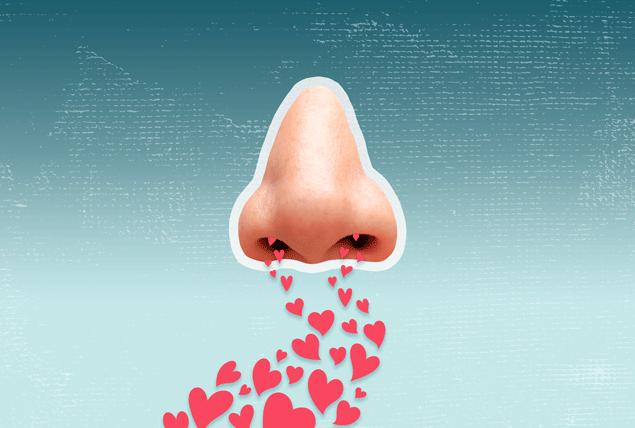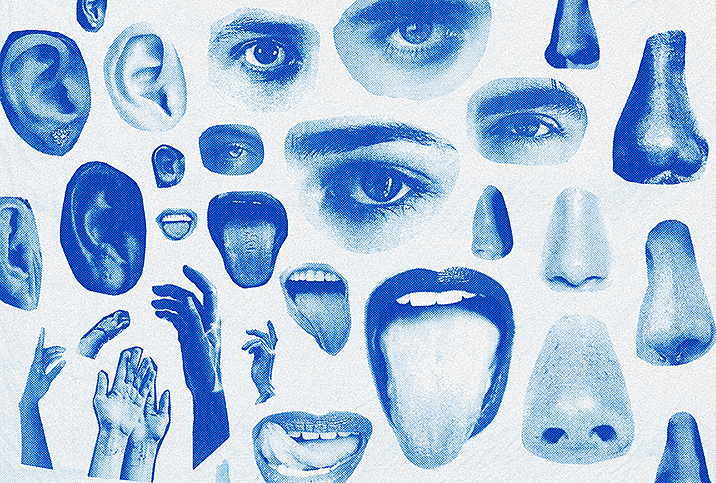What Role Does Scent Seduction Play in Sexual Attraction?

Key Points
- Pheromones guide behavior and attraction among organisms of the same species.
- There are claims and indications of certain substances acting as pheromones in humans, but no definitive experimental proof supports these claims.
- Androstenone, androstadienone, estratetraenol, copulins and axillary steroids are suspected of having an influence on human behavior.
Pheromones are chemical signals that play a vital role in the animal kingdom and have a subtle/complex role in driving attraction or repulsion between organisms of the same species.
For instance, ants leave a trail of pheromones to guide other ants, while certain moths release them to attract mates across vast distances as a part of their mate-finding rituals.
But what about humans? Emerging research suggests "scent seduction" may play a subliminal role in human relationships. Let's explore the science of pheromones and their potential role in driving behavior.
Pheromones in humans
Understand that the production, role and function of pheromones in humans are still subject to ongoing research and debate. Despite the many claims or indications that certain substances might act as pheromones in humans, the scientific community has yet to reach a consensus according to researchers. That's primarily because no definitive experimental proof backs up these claims.
The crux of the debate hinges on an organ known as the vomeronasal organ (VNO), which is found in vertebrates such as mammals, reptiles and amphibians. Research indicates the existence of the VNO in the human embryo is undisputed and has similar features to those found in other species.
In adults, the VNO structure is identified in the nasal septum. Its presence varies between studies but is estimated to exist in about 92 percent of adults. Since the VNO is difficult to detect and has no obvious sensory neurons, it is difficult to make any definitive claims as to its function or ability to influence human subliminal behavior.
The common belief is that the human sense of smell—our olfactory sense—is weak compared to other mammals or vertebrates. However, emerging research has challenged this myth. Even if we don't know everything about the olfactory system—if it is truly more sophisticated than previously believed and similar to other mammals—new findings strengthen the possibility that humans, like other animals, utilize pheromones in some form.
Recommended
- WTF is the TikTok 'Vabbing' Trend?: Wearing vaginal fluid as perfume isn't new but is having a resurgence, thanks to influencers.
- The Purpose of Pubic Hair: Only you should decide whether it stays or goes.
- What Ancient Roman Sex Practices Were Actually Like: What kind of sexual habits and practices were there in Ancient Rome?
In humans, research has found that certain compounds in body odor can affect others' behavior. This is why scent and physical attraction are often linked, according to Mumbai-based forensic psychiatrist and sexologist Ketan Parmar, M.D.
This aligns with the concept of pheromones in other animals, where these chemicals lead to innate behavioral responses often without conscious recognition.
"Pheromones are chemical substances produced by animals, including humans, that can influence behavior and physiological responses in others of the same species," said Martha Tara Lee, Ph.D., D.H.S., an AASECT-certified sex educator and clinical sexologist with Eros Coaching in Singapore. "They are typically detected through the olfactory system—your sense of smell—and can trigger various reactions, such as sexual attraction or territorial marking. However, understanding human pheromones and their specific effects is still an area of ongoing research."
According to 2020 research, pheromones could potentially influence numerous systems in the human body, including those involved in the following functions:
- Menstrual cycle. Some studies suggest women living in close proximity can synchronize their menstrual cycles due to pheromonal cues. However, the evidence is mixed and remains a topic of debate among researchers.
- Nutrition. In the animal kingdom, pheromones can communicate information about food sources and affect feeding behaviors.
- Sociosexual behavior. These chemical cues can influence mate selection, dominance hierarchies and even group dynamics. In humans, there's speculation that pheromones might influence partner preference or levels of sexual desire.
While the exact mechanisms remain elusive, a few compounds produced by humans are suspected of having an influence on our behavior. These include androstenone, androstadienone, axillary steroids, copulins and estratetraenol.
Androstenone
This compound is found in higher concentrations in male sweat and is associated with male body odor. Its perception varies among individuals, from being odorless to having a strong, unpleasant smell. It's been the subject of numerous studies examining its potential role in human behavior and attraction. Some studies have suggested gay men may be more sensitive to this compound than straight men.
Androstadienone
This is a derivative of testosterone and has been described as having an influence on human mood, particularly in women. It is also found in the sweat of males.
Axillary steroids
Found in the armpit sweat, axillary steroids are often the main focus when researching human pheromones. The bacteria in our armpits metabolize these steroids to produce odorants. Some compounds have been found to elicit gender-specific reactions, where women experienced an increase in positive stimulated mood, while men experienced a decrease. This further hints at the role of pheromones in subliminal communication.
Copulins
These are a group of volatile fatty acids found in vaginal secretions. It has been suggested copulins may increase male sexual attraction to females.
Estratetraenol
This is an estrogen-like compound excreted in the urine of women, especially during ovulation. There have been studies looking into its potential effects on mood in men.
Do pheromone perfumes work?
Standing at the intersection of science and desire are pheromone perfumes. While their efficacy in driving specific behaviors remains a topic of research, many users report heightened feelings of confidence and allure when wearing them. This could be attributed to the fragrance, the potential effects of the ingredients or simply the placebo effect of knowing one is wearing something special.
In essence, while science continues to explore and understand the depths of pheromones in humans, pheromone perfumes offer an intriguing proposition that has not yet moved past correlation and into causation. However, anecdotal reports and emerging studies offer strong hints that humans may not be exempt from their subliminal influence.
"If you choose to use pheromone perfumes, it's important to follow the instructions provided by the manufacturer," Lee said. "Typically, pheromone perfumes are applied to pulse points, such as the wrists, neck or behind the ears. However, it's important to note that the effectiveness of pheromone perfumes in attracting others is still a topic of debate and individual responses may vary. It's also essential to approach attraction and seduction with respect and consent."
"Put a few drops on your neck, chest, jawline, scalp and some on your clothing if desired," said Lyndsey Murray, L.P.C., a licensed professional counselor and AASECT-certified sex therapist with Relationship Matters Therapy in Hurst, Texas. "You can also use a few drops in massage oil for direct application to your skin."


















